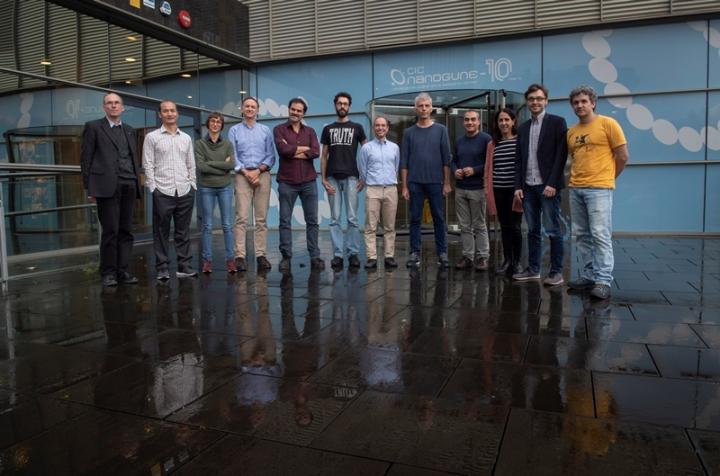
Credit: CIC nanoGUNE
The EU-funded research project SPRING (SPin Research IN Graphene) has celebrated its kickoff meeting on Nov. 7-8, 2019 in Donostia/San Sebastián (Spain).
The meeting marks the starting point of a 4-year research project that is coordinated by CIC nanoGUNE and integrates IBM Research, Donostia International Physics Center, and University of Santiago de Compostela, Technical University of Delft and the University of Oxford. The consortium of these 6 leading European research institutions has been granted a total of €3.5 million from the European Commission under the highly competitive Horizon 2020 FET-Open call, which funds cutting-edge high-risk / high-impact interdisciplinary research projects that must lay the foundations for radically new future technologies.
The SPRING project combines recent scientific breakthroughs from the consortium members to fabricate custom-crafted magnetic graphene nanostructures and test their potential as basic elements in quantum spintronic devices. The targeted long-term vision is the development of an all-graphene – environmentally friendly – platform where spins can be used for transporting, storing and processing information.
As the name suggests, spin can be loosely understood as the rotation of a fundamental particle of matter around itself. For instance, every electron in any material carries both a charge and a spin, the latter playing a key role in magnetism.
Within the scientific community there is consensus that spin is the ideal property of matter to expand the performance of current charge-based nanoelectronics into a class of faster and more power-efficient components, being the basis for the emerging technology called quantum spintronics. The SPRING project will investigate the fundamental laws for creating and detecting spins in graphene, this is to read and write spins, and using them to transmit information.
Jose Ignacio Pascual, Ikerbasque Research Professor at CIC nanoGUNE and scientific coordinator of the project, explains that “graphene is ideal to host spins and to transport them. This atomically thin material can now be fabricated with atomic precision, opening the door to fabrication of designer structures with precise shape, composition, spin arrangement, and interconnected by graphene electrodes for electrostatic or quantum gates. The potential is a platform for the second quantum revolution as qubit elements for quantum computation.”
###
Media Contact
Irati Kortabitarte
[email protected]
Original Source
https:/




